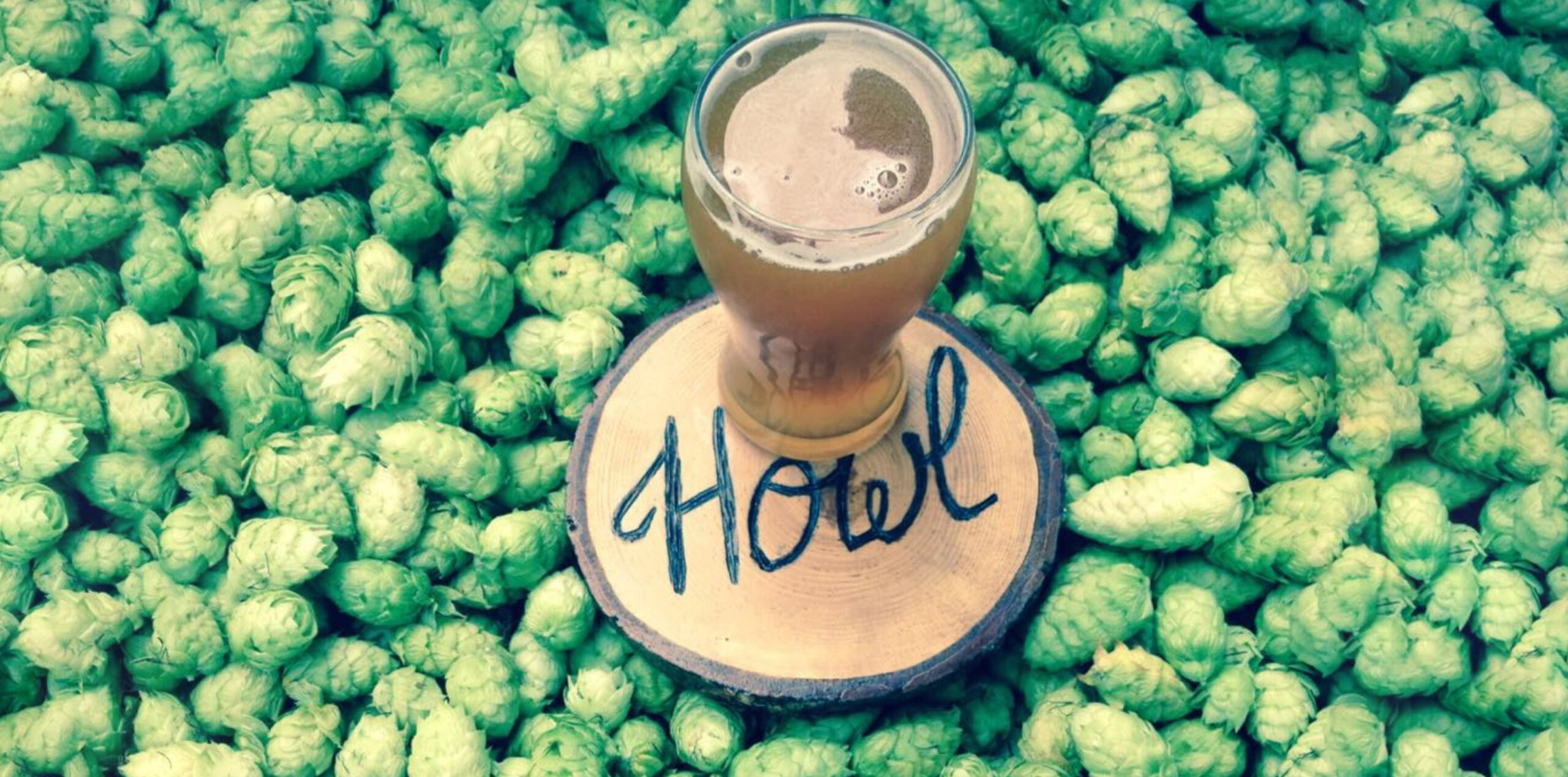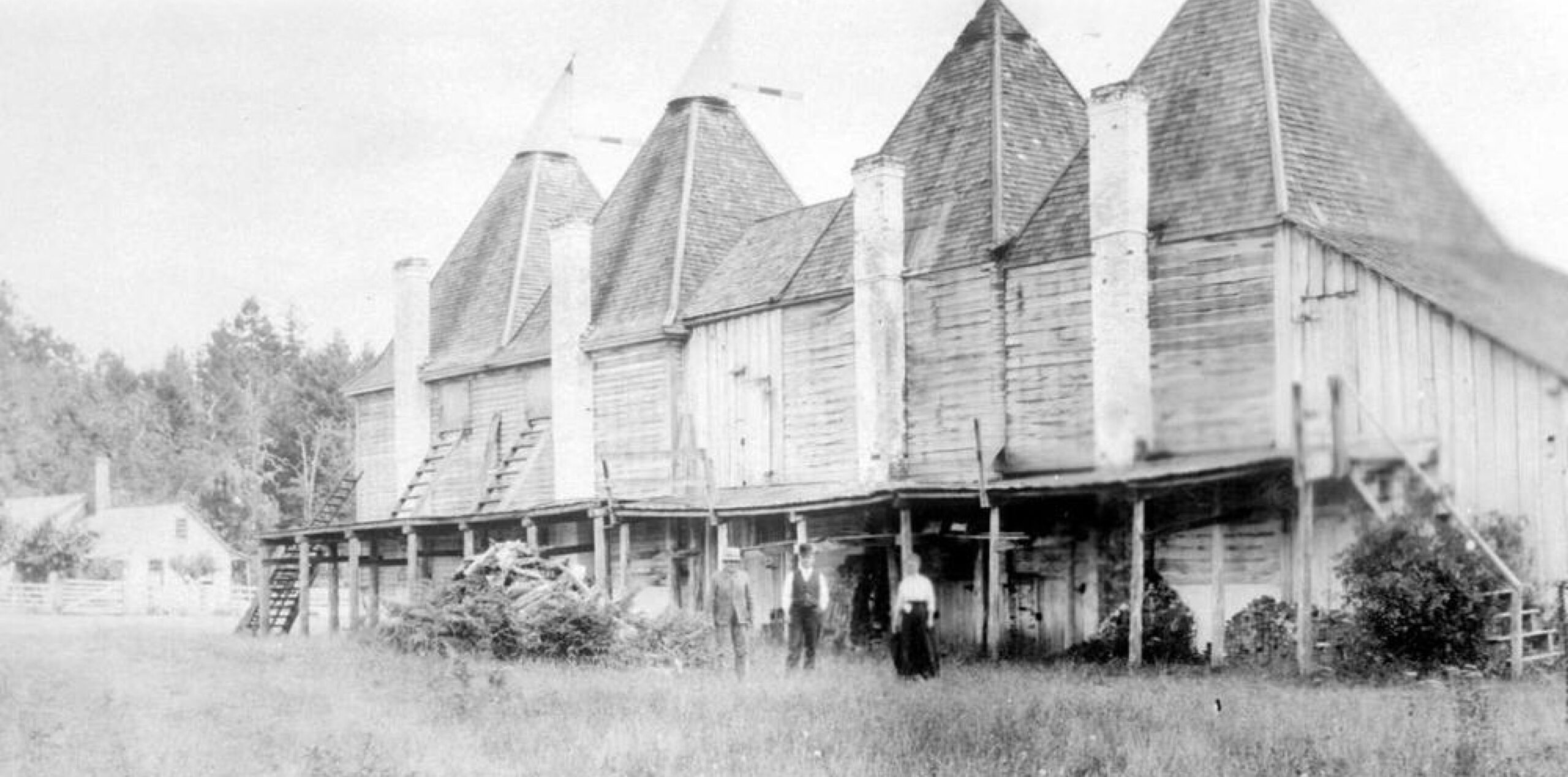story by Tilar J. Mazzeo –
This month, let’s talk hops. If you drink beer, you’ve tasted hops. Beer is, essentially, water, fermented grain (often but not always barley), and, more often than not, hops: the flowers or “cones” of a plant called humulus lupulus. Lupulus comes from the Latin for “wolf,” because this vining plant pounces on its supports like a wolf on sheep, and so it’s sometimes referred to as “wolf vine.” It’s commonly called hops, though, from the Anglo-Saxon hoppan – “to climb.”
If you toured the Saanich Peninsula 150 years ago, you would have discovered fields of barley and dozens of hop yards, the high-trellised plantations where hops “bines” (twisting vines) grow to dizzyingly heights of 20 feet or more. On a warm summer day in season, hop vines can scramble upward a foot or more a day, and fun botanical fact: they always twist in a clockwise direction.
Tradition has it that the first hops were brought to the Saanich Peninsula in 1864 from San Francisco by a settler named William Towner, who established a large hop yard on Downey Road in North Saanich. Throughout the 1880s and 1890s, as the number of yards expanded, North Saanich was a renowned site of hop production. By the turn of the 20th century, British Columbia was the largest producer of hops anywhere in the Commonwealth, and Vancouver Island was among the areas in the province exporting hops internationally. By the 1950s, it was over: local production was no longer profitable. There was the disastrous arrival of a particularly destructive species of hop weevil and increased competition on the mainland. The Peninsula hopyards, with their distinctive trellising and the hop kilns or “oast houses” used to dry the crop, fell into disrepair and have since vanished.
I had the idea three years ago to plant a small hopyard on the farm, and this autumn we were finally rewarded with our first harvest. I wanted to see if hops would flourish, and they did! They grew so high that we had another logistical challenge, new to us but long familiar to hop farmers: how to harvest something 20 feet or more in the sky. Traditionally, English hop growers harvested on stilts. I toyed with the idea of harvesting my own crop this way, but imagined myself, trussed up in traction, having a stunned conversation with WorkSafe … and instead simply dropped the whole deliciously-scented, feather-light crop on my head.
For all the logistical challenges, the scent of those hops was worth it. Fresh, ripe hops are exquisite, with the aromas of pine and spice and earth. Added to beer, of course, they lend those aromatics and a note of bitterness to a brew, to counter-balance the sweetness of the grains. Historically, that bitterness wasn’t the goal: hops became ubiquitous in early, traditional beer-making because hops are also natural anti-microbial agents, helping to preserve beer from being spoiled by rogue bacteria.
Today, British Columbia hop yards are returning to the scene, and craft brewers are again increasingly able to source provincially-grown hops, though at the moment those hop yards are primarily clustered in the Lower Mainland and Fraser Valley. Am I crazy to hope hops will return to the Peninsula?
In some last, few corners, there are the remains of those historic hopyards. In fields and scrambling up trees in North Saanich, there are the survivors of William Towner’s hopyards and the many hopyards that followed.
If you fancy trying a local beer made with some old hop plantings, stop by Howl Brewing on Mills Road in North Saanich (www.howlbrewing.ca). Each autumn, community-sourced hops from local old bines are brought in by neighbours in buckets and brewed to keep a Peninsula beer-making tradition alive until the hopyards return to the Island.
Do you think you have some survivor hops somewhere out in that back pasture or garden? Drop me a line at tilarmazzeo@gmail.com, and let’s have a look: you may have in your field just the locally-adapted, weevil-resistant rhizome this renaissance requires.
Colour photo: photo courtesy Howl Brewing
Black and white photo: Hop Silo at William Towner Farm in North Saanich – Image a-01715_141 courtesy of the Royal BC Museum





